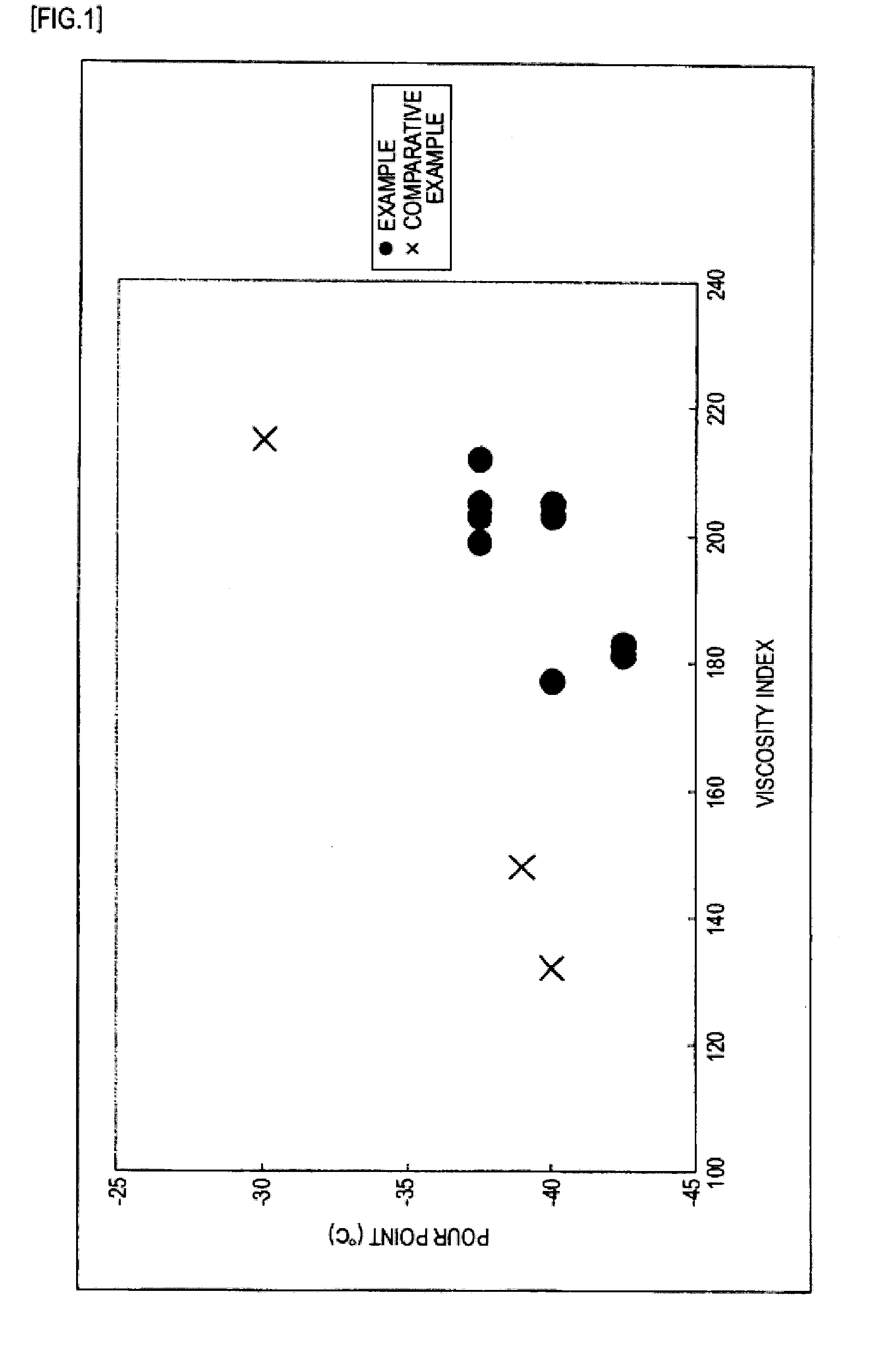Alpha-olefin (CO)polymer, hydrogenated alpha-olefin (CO)polymer and lubricating oil composition containing the same
a technology of alpha-olefin and polymer, which is applied in the direction of lubricant composition, petroleum industry, liquid carbonaceous fuels, etc., can solve the problems of insufficient low-molecular weight polymers, insufficient viscosity index of obtained poly--olefin, etc., and achieve excellent viscosity characteristics and low-temperature characteristics.
- Summary
- Abstract
- Description
- Claims
- Application Information
AI Technical Summary
Benefits of technology
Problems solved by technology
Method used
Image
Examples
production example 1-1
Production of (1,1′-dimethylsilylene)(2,2′-dimethylsilylene)-bis(cyclopentadienyl)zirconium dichloride
[0133]About 13.8 g (600 mmol) of metal Na and 400 ml of dry THF (tetrahydrofuran) were put into a nitrogen-purged, 1000-ml three-neck flask, and stirred therein at 0° C. After 5 minutes, 1 to 2 ml of cyclopentadiene was dropwise added thereto, and when the hydrogen generation stopped, 1 to 2 ml of additional cyclopentadiene was added thereto. This was repeated, and 50 ml (600 mmol) in total of cyclopentadiene was added. The reaction solution changed from colorless transparent to pale pink. THF was removed through evaporation under reduced pressure, and the crystal was washed twice with hexane and dried to solidness under reduced pressure to give cyclopentadienyl sodium as a pink powder.
[0134]457 ml of THF was added to 43.0 g (480 mmol) of cyclopentadienyl sodium at 0° C. and stirred. This was cooled to −78° C., and 29.2 ml (480 mmol) of dichlorodimethylsilane was gradually and dropw...
example 1-1
[0140]A stainless autoclave having an inner capacity of 1 liter was fully dried and purged with nitrogen, and then 200 ml of 1-dodecene, 200 ml of 1-octene and then 0.3 mmol of triisobutylaluminium were put thereinto, and heated up to 105° C. 1.6 ml of a separately prepared catalyst mixture (this was prepared by putting 0.20 mmol of triisobutylaluminium (0.5 mmol / ml toluene solution; 0.4 ml), 4 gmol of (1,1′-dimethylsilylene)(2,2′-dimethylsilylene)-bis(cyclopentadienyl)zirconium chloride obtained in Production Example 1-1 (5 gmol / ml toluene solution, 0.8 ml), and 0.08 mmol (64 mg) of powdery N,N-dimethylanilinium tetrakis(pentafluorophenyl)borate into a 10-ml glass-made Schlenk flask in a nitrogen atmosphere, then stirring them therein at room temperature for about 1 minute, and thereafter further adding thereto 1 ml of 1-octene and 1 ml of 1-dodecene and stirring them at room temperature for 1 hour) was put into the autoclave, then 0.05 MPaG of hydrogen was introduced thereinto, an...
example 1-2
[0141]209 g of a colorless transparent, hydrogenated polymer, from which the fraction having at most 24 carbon atoms had been removed, was obtained according to the same process as in Example 1-1, for which, however, the polymerization temperature was 90° C. The results obtained according to the above-mentioned analysis methods are shown in Table 1.
PUM
| Property | Measurement | Unit |
|---|---|---|
| Temperature | aaaaa | aaaaa |
| Kinematic viscosity | aaaaa | aaaaa |
| Kinematic viscosity | aaaaa | aaaaa |
Abstract
Description
Claims
Application Information
 Login to View More
Login to View More - R&D
- Intellectual Property
- Life Sciences
- Materials
- Tech Scout
- Unparalleled Data Quality
- Higher Quality Content
- 60% Fewer Hallucinations
Browse by: Latest US Patents, China's latest patents, Technical Efficacy Thesaurus, Application Domain, Technology Topic, Popular Technical Reports.
© 2025 PatSnap. All rights reserved.Legal|Privacy policy|Modern Slavery Act Transparency Statement|Sitemap|About US| Contact US: help@patsnap.com



